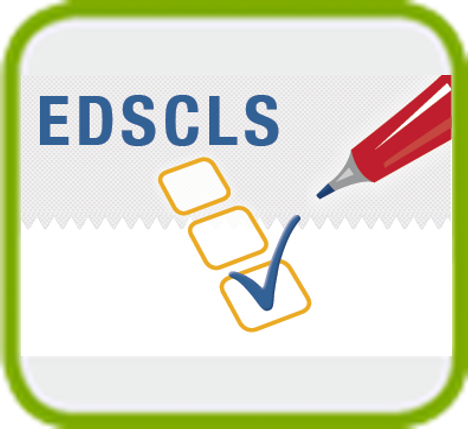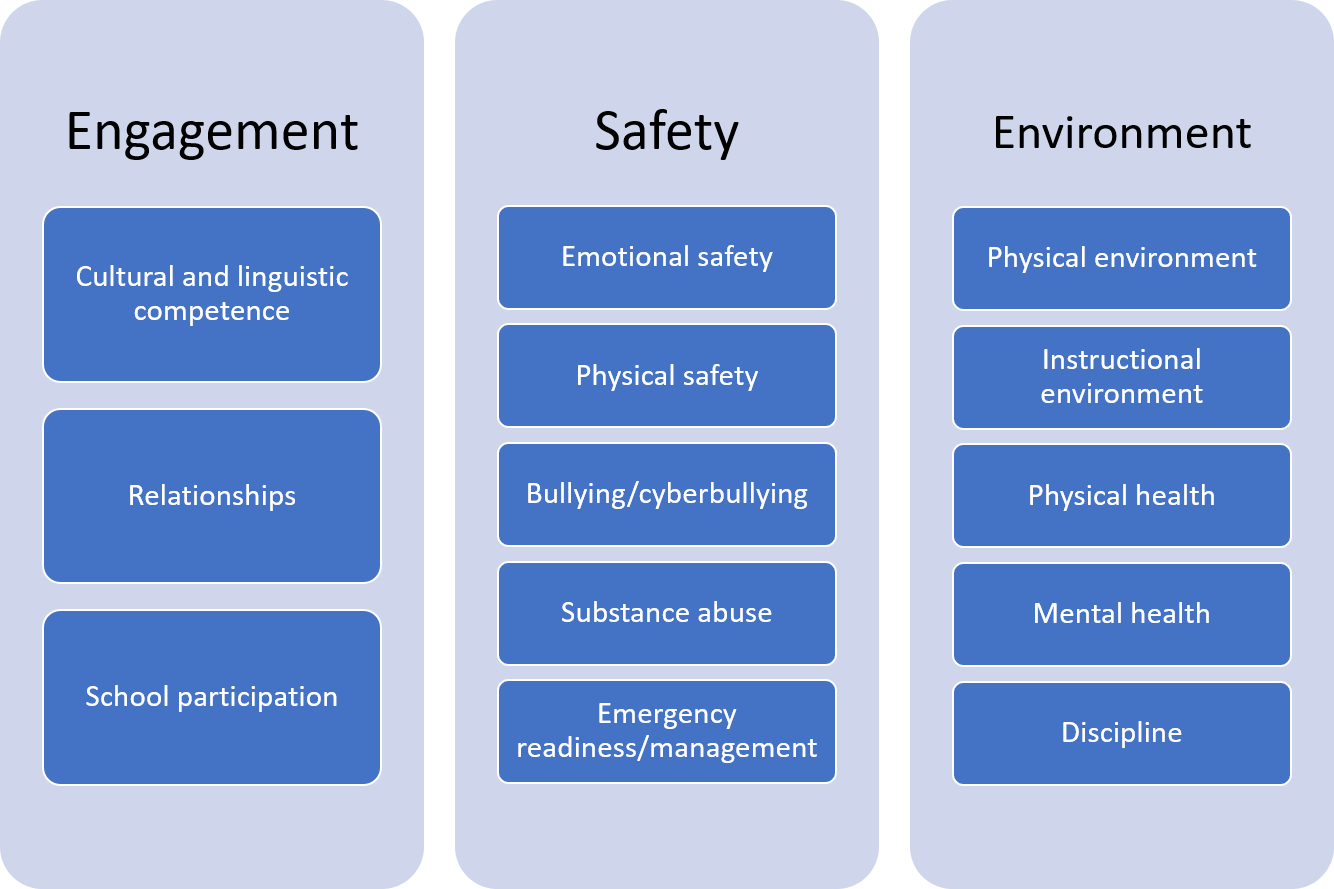School climate is a broad, multifaceted concept that involves many aspects of the student’s educational experience. A positive school climate is the product of a school’s attention to fostering safety; promoting a supportive academic, disciplinary, and physical environment; and encouraging and maintaining respectful, trusting, and caring relationships throughout the school community no matter the setting—from Pre-K/Elementary School to higher education.
A positive school climate is critically related to school success. For example, it can improve attendance, achievement, and retention and even rates of graduation, according to research. School climate has many aspects. Defining a framework for understanding school climate can help educators identify key areas to focus on to create safe and supportive climates in their schools.
Featured Resources
 | Parent and Educator Guide to School Climate Resources. Provides general information about the concept of school climate improvement, suggestions for leading an effective school climate improvement effort, and additional resources. |
School Climate Improvement Resource Package. Assists schools and districts improve school climate. It includes a variety of resources that meet a range of needs among stakeholders interested in improving school climate. | |
 | ED School Climate Surveys (EDSCLS). Outlines a tool that allows States, local districts, and schools to collect and act on reliable, nationally-validated school climate data in real-time. The EDSCLS builds on federal initiatives and research, which recommended that the Department work on the issue of school climate. The surveying tool is free of charge and can be downloaded on the NCSSLE website. |
Learn More on Our Website by Visiting the Following Areas
Topics. As described above, school climate touches on a range of topics that affect conditions for learning. Reflecting on and addressing those school climate topics can help educators and other stakeholders build safe supportive learning environments. Learn About School Climate Topics Roles. While most resources and information could be beneficial to all, there are some materials specific to particular roles in making improvements to the learning environment. Education Levels. While engagement, safety and environment, are the cornerstone for safe supportive learning environments for all students, developmental and system differences lead stakeholders to approach learning environment improvements differently. |
| National and State Indicators. The National Center on Safe Supportive Learning Environments (NCSSLE) developed State Profiles for each state highlighting current programs to create safe and supportive learning environments and improve student outcomes. | |

